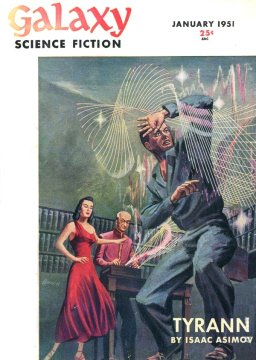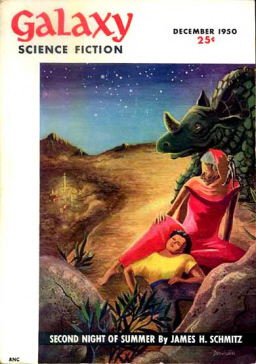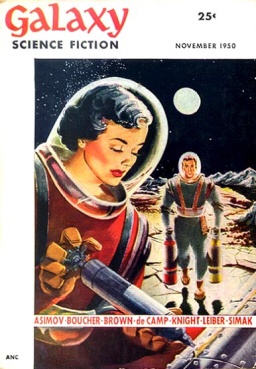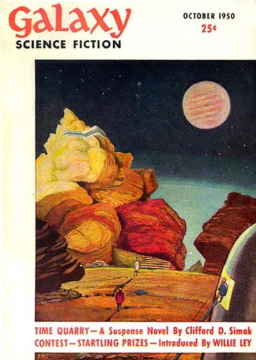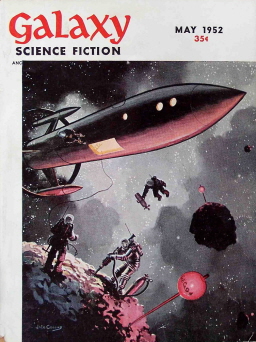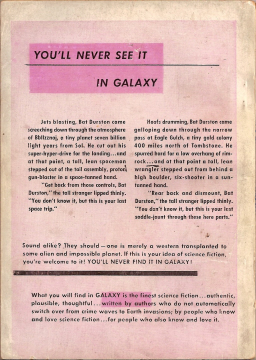Galaxy Science Fiction, February 1951: A Retro-Review
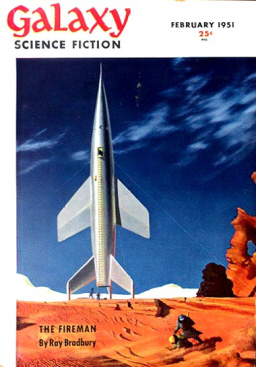 The February, 1951 issue of Galaxy Science Fiction is groundbreaking. The first story is a novella by Ray Bradbury titled “The Fireman.”
The February, 1951 issue of Galaxy Science Fiction is groundbreaking. The first story is a novella by Ray Bradbury titled “The Fireman.”
My heart skipped a beat when I saw this, and I quickly discovered that Bradbury later expanded this tale into the classic novel Fahrenheit 451.
In “The Fireman,” Mr. Montag works as a fireman – not one who douses flames, but one who starts them in order to destroy books. Books, after all, are upsetting and challenge the brain-numbing entertainment of the day. People who are well-read might unbalance a society of non-thinkers.
I read Fahrenheit 451 in school, and I didn’t understand all of the warnings Bradbury issues throughout the novel. When I read “The Fireman,” there were parts that really concerned me as I considered our own society. Replace references to “television” with “Internet” or “Facebook,” and suddenly Bradbury’s dystopia doesn’t seem so distant anymore. This is a story I wish everyone would read – and think about while reading it. It really is quite chilling.
“…And it comes out here” by Lester del Rey – A man travels back in time to prepare his younger self for an expedition. The mission is to retrieve a device from the future and claim it as his own invention.
I love the second-person narrative of this tale, and I equally enjoyed the way that everything circuitously ties together. It was interesting how del Rey used the protagonist both as a character and as a narrator, and because time travel was involved, these were essentially two different people.
Oh, and in case you’re wondering — yes, this is the same man who started Del Rey Books.
